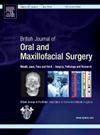机器人系统在儿科颅面和头颈部手术中的应用:文献综述。
IF 1.7
4区 医学
Q3 DENTISTRY, ORAL SURGERY & MEDICINE
British Journal of Oral & Maxillofacial Surgery
Pub Date : 2025-04-01
DOI:10.1016/j.bjoms.2024.11.011
引用次数: 0
摘要
儿科颅面和头颈部手术的手术挑战包括在小腔内操作,深度感知有限,角度困难,进入受限,视觉效果差。精细的组织处理、肌肉解剖和深度缝合需要外科手术与手术显微镜的使用相一致。通过提高手术器械的自由度,机器人辅助可以帮助外科医生在狭窄的空间内以最小的切口进行手术。在这项研究中,我们的目的是回顾机器人系统在儿科头颈部和颅面外科手术中的应用,重点关注总并发症和手术时间,以及患者和外科医生的经验。两位独立审稿人于2023年6月对Pubmed、Dynamed、DARE、EMBASE、Cochrane和British Medical Journal (BMJ)电子数据库进行了文献检索,检索1960-2024年间发表的文章。17篇论文符合纳入标准。纳入79例患者。包括机器人辅助的头颈部和颅面手术成功率为93.7% (n = 74),并发症发生率为16.0% (n = 12)。在我们纳入的研究中,机器人辅助手术在治疗一系列不同的头颈部病理方面显示出低并发症率。在颅面外科手术中,机器人辅助显示了在传统方法中预防医源性损伤的希望,并且可以允许手术在生命早期进行,以管理中面分心,然而,在该领域进行更多的研究是必要的,目前发表的研究有限。本文章由计算机程序翻译,如有差异,请以英文原文为准。
Implementation of robotic systems in paediatric craniofacial and head and neck surgery: a narrative review of the literature
Surgical challenges in paediatric craniofacial and head and neck surgery can include operating in a small cavity, limited depth perception, restricted access with difficult angulations, and poor visualisation. Delicate tissue handling, muscle dissection, and suturing at depth require surgical access in congruence with the use of operative microscopes. Robotic assistance may aid surgeons in operating in confined spaces with minimal access incisions by improving the degree of freedom of operative instrumentation. In this study, we aim to review the use of robotic systems in paediatric head and neck and craniofacial surgery by focussing on total complications and length of surgery together with patient and surgeon experience. A literature search was conducted in June 2023 by two independent reviewers on Pubmed, Dynamed, DARE, EMBASE, Cochrane and British Medical Journal (BMJ) electronic databases for articles published between 1960-2024. Seventeen papers met the inclusion criteria. Seventy-nine patients were included. The success rate for head and neck and craniofacial cases that included robotic-assistance was 93.7% (n = 74) and the complication rate was 16.0% (n = 12). Robotic-assisted surgery demonstrates a low complication rate in treating a range of different pathologies in the head and neck in our included studies. Robotic-assistance in craniofacial surgery demonstrates promise in preventing iatrogenic injury from more traditional methods, and could allow for operations to proceed earlier in life in the management of midface distraction, however, more research in the area is necessary with limited research published at present.
求助全文
通过发布文献求助,成功后即可免费获取论文全文。
去求助
来源期刊
CiteScore
3.60
自引率
16.70%
发文量
256
审稿时长
6 months
期刊介绍:
Journal of the British Association of Oral and Maxillofacial Surgeons:
• Leading articles on all aspects of surgery in the oro-facial and head and neck region
• One of the largest circulations of any international journal in this field
• Dedicated to enhancing surgical expertise.

 求助内容:
求助内容: 应助结果提醒方式:
应助结果提醒方式:


